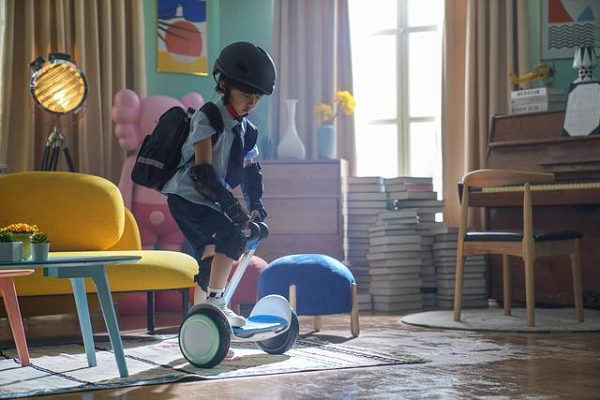Xiaomi Integrates Voice Assistant into Child’s Electric Scooter
 Chinese tech giant Xiaomi’s new electric scooter for children includes a voice assistant to teach kids how to ride. The company’s subsidiary Ninebot showcased new electric scooters at an online product reveal event this week. Including the Ninebot Nano self-balancing scooter and its AI-powered teacher.
Chinese tech giant Xiaomi’s new electric scooter for children includes a voice assistant to teach kids how to ride. The company’s subsidiary Ninebot showcased new electric scooters at an online product reveal event this week. Including the Ninebot Nano self-balancing scooter and its AI-powered teacher.
Scooter Talk
Xiaomi’s scooters evolved from Segway, the famously failed scooter company now owned by the Chinese firm. The event focused mostly on the new Ninebot Electric Scooter Air T15 for adults, which connects with the user’s smartphone, but doesn’t include a voice assistant. The Ninebot Nano, a smaller version of the main scooter aimed at the children’s market, includes an AI voice ostensibly as a way of teaching a child how to ride the scooter. The scooter as a whole is clearly designed to entice children, with halo lights on the wheels, a rear lamp that is supposed to evoke robot eyes while improving visibility, and white, pink, and blue color options for the scooter. The voice assistant meanwhile, offers both instructions for riding and safety tips. Parents can set the scooter to three different modes that limit speed, with even the highest level approximately 8.5 miles per hour. The voice assistant is built into the system, but the scooter can connect to smartphones by Bluetooth to make the speakers play music.
Kidding Around
An integrated teacher and safety adviser for kids learning how to use the scooter is a clever way to reassure parents concerned about their children riding the vehicle. It’s still early days for child-specific voice AI, but teaching aides and toys are likely to be the most popular ways of using the technology. Xiaomi’s scooter AI combines both aspects in one vehicle. Toy manufacturers are building more smart toys that can be controlled by a voice assistant, often with educational themes. In the U.S., Amazon and Google have both been rapidly expanding their portfolio of voice apps and devices for children, like the Echo Dot Kids Edition and the My Story Time Google Action. Google has even created a whole new voice assistant for teaching kids how to read.
There are some potential pitfalls that Xiaomi hasn’t said if it addressed. Kids don’t speak the same way as adults, regardless of language. That can make it harder for a voice assistant to understand what they are saying. Excitement during a scooter ride probably won’t help either. Addressing that discrepancy could require Xiaomi to create a child-specific voice recognition platform like the one built by Irish startup SoapBox Labs. There’s also some evidence that children, especially younger ones, distrust voice assistants. That could be problematic when it prompts the child to take precautions. Still, you can expect a lot more toys and tools for kids with voice assistants included over the next few years.
Follow @voicebotai Follow @erichschwartz
Google Launches New Voice Assistant and App to Teach Kids to Read
This Alexa-Powered Play Kitchen Teaches Kids How to Shop and Cook








